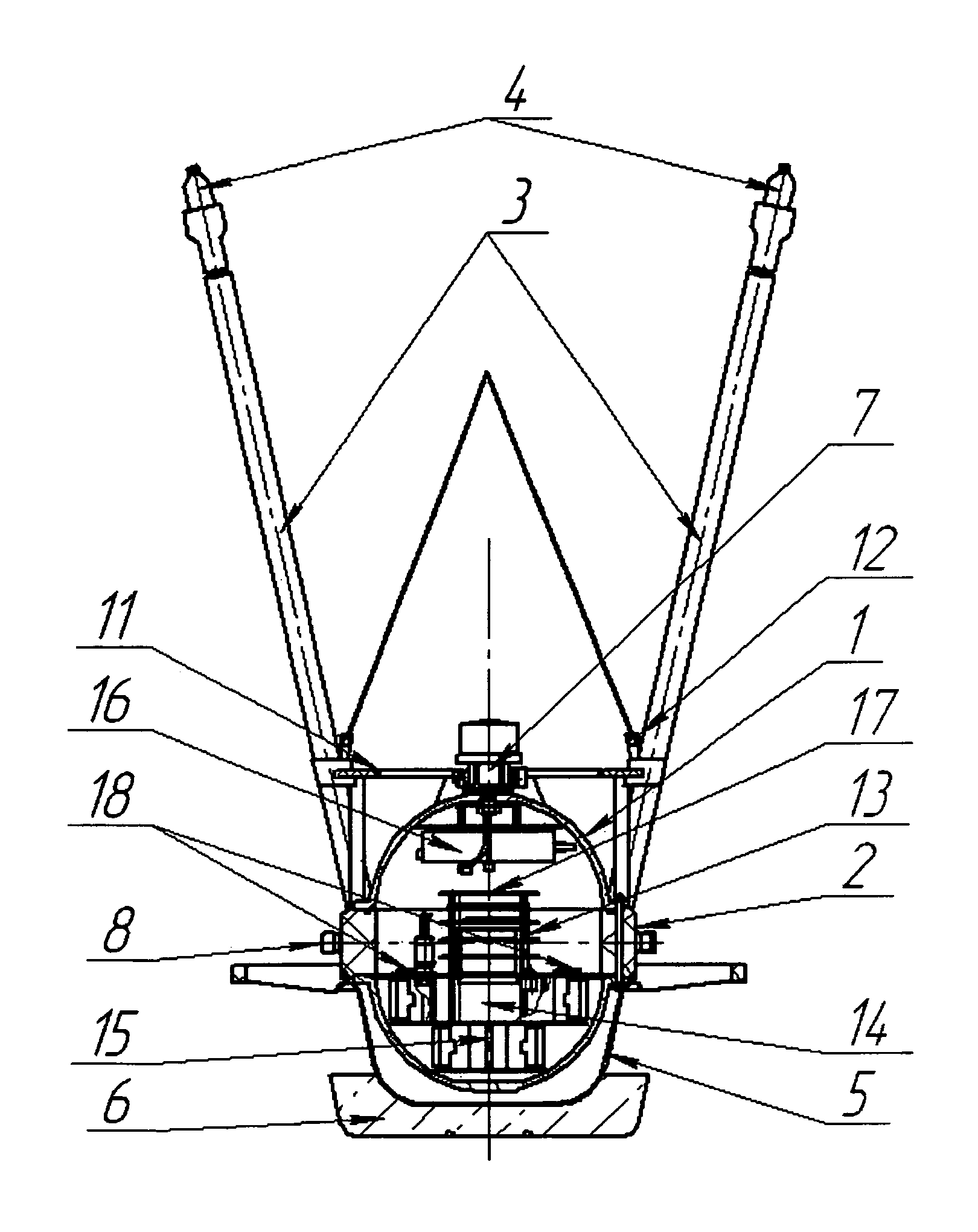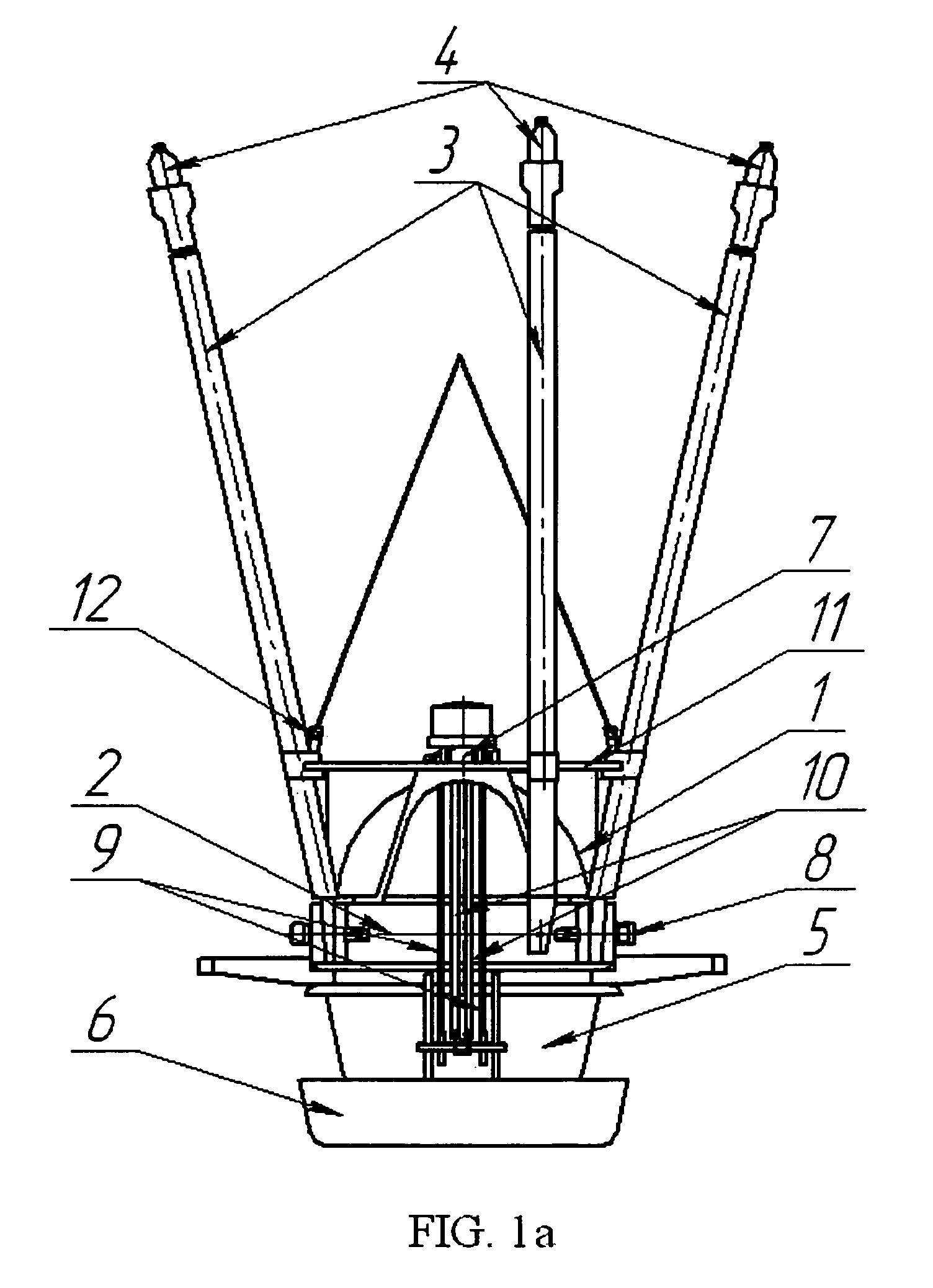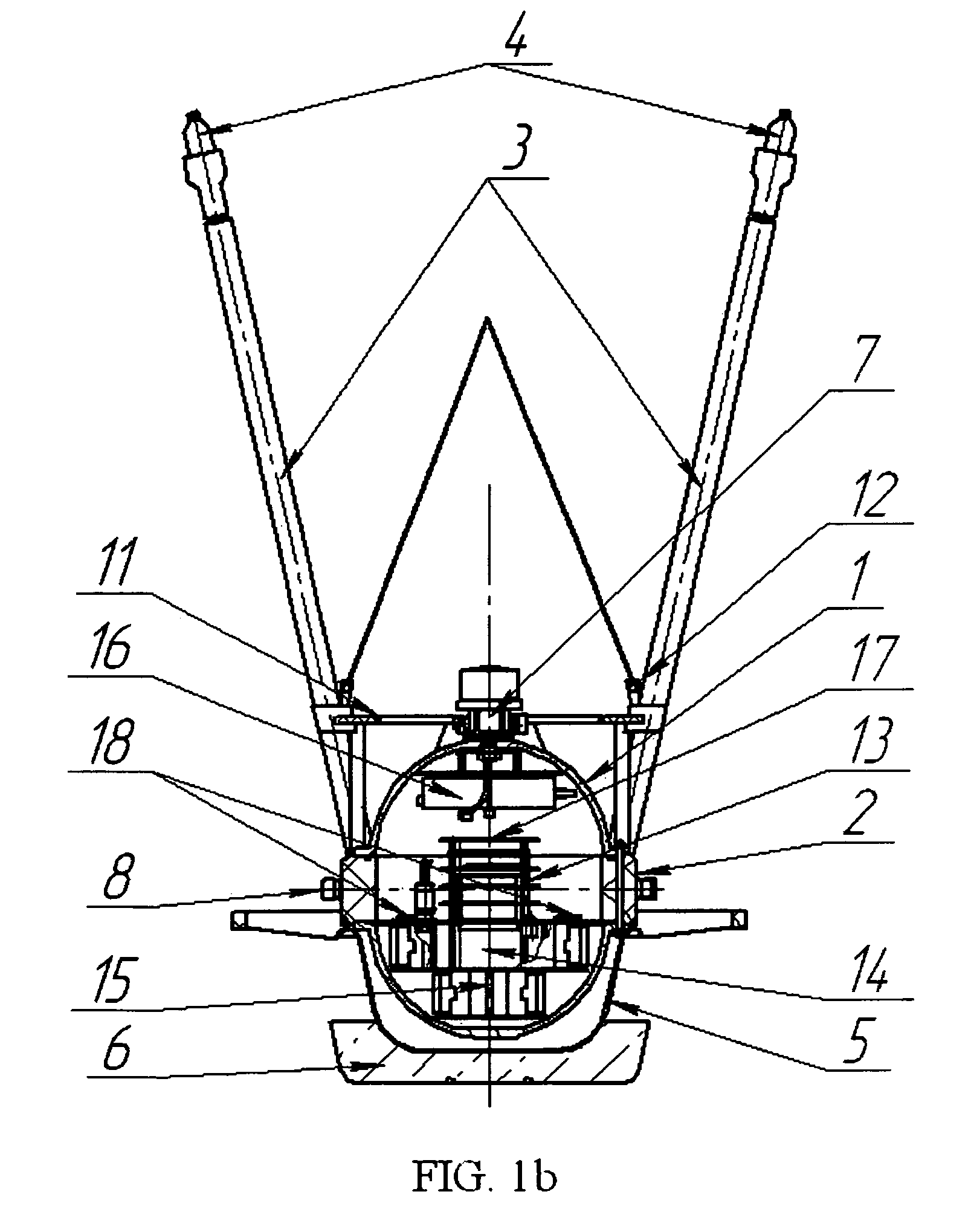Bottom system for geophysical survey (variants)
a geophysical survey and bottom system technology, applied in the field of geophysical surveys, can solve the problems of loss of the working capacity of the system, insufficient survey accuracy, and inability to complete and adequate, and achieve the effect of preventing the adhesion of the basic module's body
- Summary
- Abstract
- Description
- Claims
- Application Information
AI Technical Summary
Benefits of technology
Problems solved by technology
Method used
Image
Examples
Embodiment Construction
[0024]While the invention may be susceptible to embodiment in different forms, there are shown in the drawings, and will be described in detail herein, specific embodiments of the present invention, with the understanding that the present disclosure is to be considered an exemplification of the principles of the invention, and is not intended to limit the invention to that as illustrated and described herein.
[0025]The following designations are used in FIGS. 1-4: 1—spherical hermetic body of a basic module, 2—insertion, 3—movable arms, 4—non-polarized measuring electrodes, 5—conical member (having a ‘pot’-like shape, similar to a truncated cone), 6—load preferably made of concrete, 7—acoustic release system preferably of an electrochemical type, 8—hermetic connectors, 9—Kevlar straps, 10—elastic tension bar, 11—rail, 12—arm fixing element, 13—registration device, 14—main power unit, 15—power unit of the release system, 16—electronic block of the release system, 17—angle sensor, 18—p...
PUM
 Login to View More
Login to View More Abstract
Description
Claims
Application Information
 Login to View More
Login to View More - R&D
- Intellectual Property
- Life Sciences
- Materials
- Tech Scout
- Unparalleled Data Quality
- Higher Quality Content
- 60% Fewer Hallucinations
Browse by: Latest US Patents, China's latest patents, Technical Efficacy Thesaurus, Application Domain, Technology Topic, Popular Technical Reports.
© 2025 PatSnap. All rights reserved.Legal|Privacy policy|Modern Slavery Act Transparency Statement|Sitemap|About US| Contact US: help@patsnap.com



